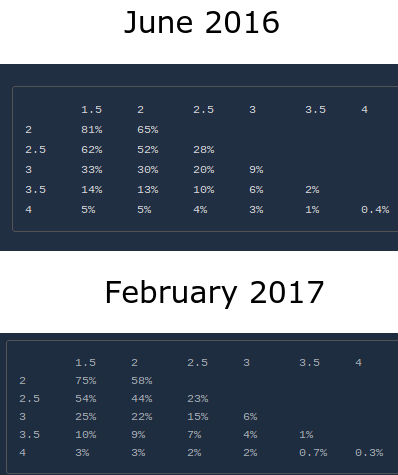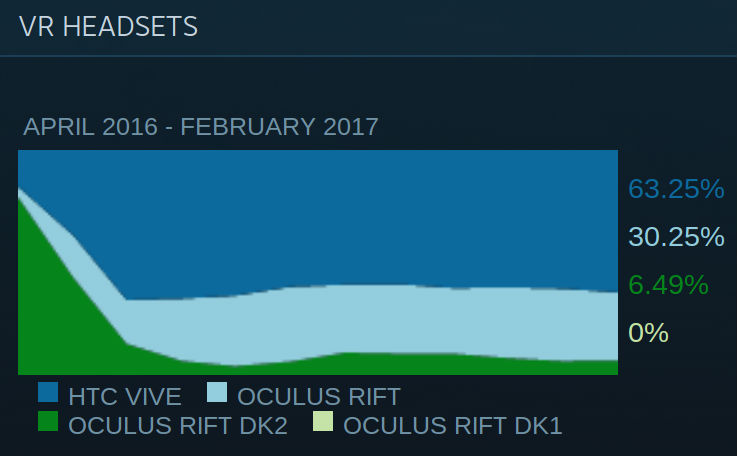Valve dropped some interesting VR user data onto its community pages during GDC, providing an easily missed but important update about how people are using the Steam platform for virtual reality in the wake of Oculus Touch.
Most interestingly, Valve’s Jeep Barnett wrote “the number of Rifts playing VR games through Steam doubled in December with the addition of optional motion controls.” This is pretty significant, as it highlights how important it is to buyers of the Oculus Touch controllers that they can access the wealth of games through Valve’s Steam marketplace in addition to the Oculus store operated by Facebook. I reached out to Barnett for clarification on this data, and he wrote in an email “the doubling mentioned was for unique Rift user(s) per day playing any VR game on Steam.”
The update also included the first data since June 2016 showing the play spaces of people using SteamVR. Barnett clarified in an email that “the play area size stats are only for SteamVR sessions, so any games on Steam that were launched in an OculusSDK mode aren’t included.”
Ease of setup and play area size are two of the biggest differentiating features between the two leading PC-powered VR headsets. Rift requires extra cameras which need to be wired to the PC to achieve larger play areas. HTC Vive, however, uses a tracking system from Valve that doesn’t need to be physically connected to a PC and thus allows people to set up larger play spaces with fewer cords running around a room.
Larger play spaces are nice because they ensure you don’t come up against boundaries or furniture while immersed in a virtual world. You get to behave as normally or as crazily as you want within this region, free to walk around and interact with the world around you. But not everyone has the space to dedicate to that kind of a free-roaming experience. The updated data through February shows that three out of four setups through Steam are at least room-scale, defined as 2 meters of free movement in one direction across the floor and at least 1.5 meters in the other. This information is very important to developers who can use the data to inform their software design decisions.
Steam hardware survey data also shows fairly consistent percentages for the breakdown of Rift, Vive and the second Rift development kit (DK2) over the course of much of the year. This is despite the fact that new sales for the DK2 ceased in late 2015. The data suggests 6.5 percent of VR headsets connected to Steam at the time of the hardware survey last month were still the DK2. Which begs the question — did the sale of new headsets stagnate after the initial consumer launch?
“One theory to reconcile the consistent DK2 percentage is that some Rift and Vive owners resell or hand down their old headset to new VR users,” wrote Barnett in an email. “Nearly 200K DK2s are out there, the same order of magnitude as Rift/Vive, so it’s actually surprising that percentage is so small. Looking at a graph of the last year I don’t see stagnation in new users, the highest peak of course being December 25th.”



























